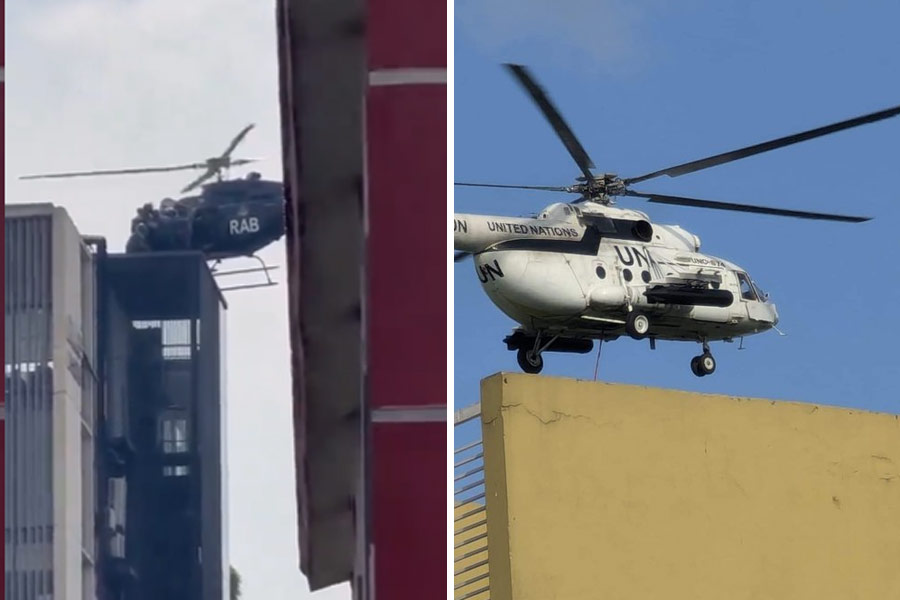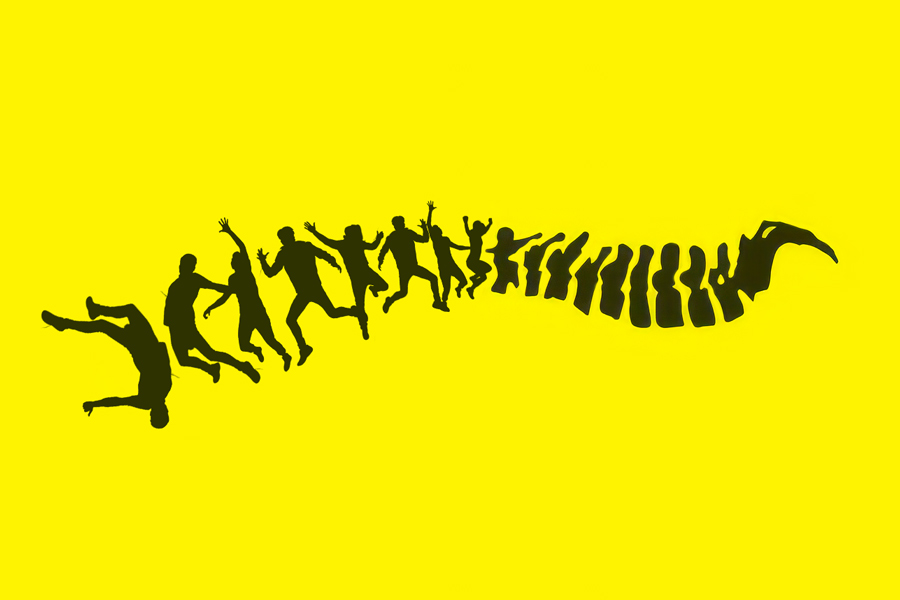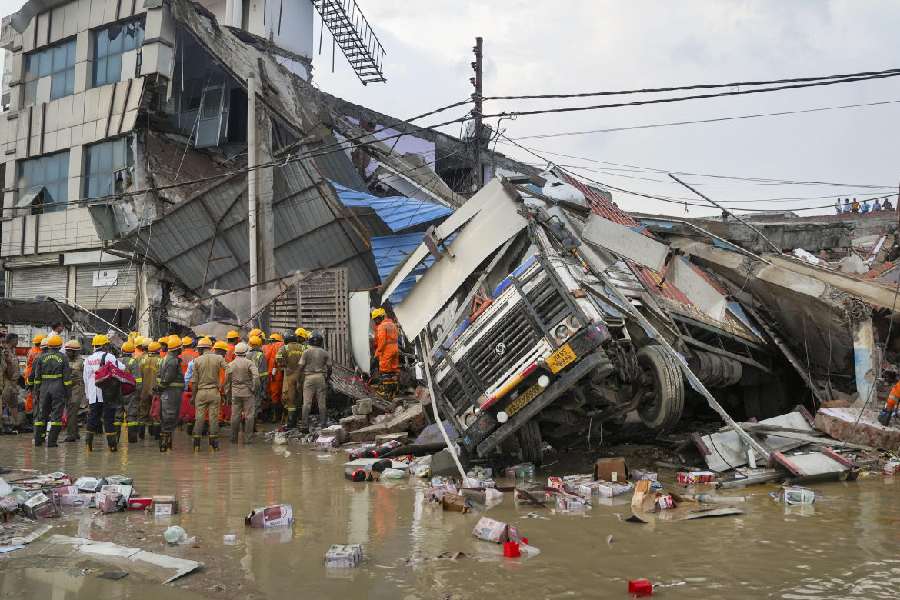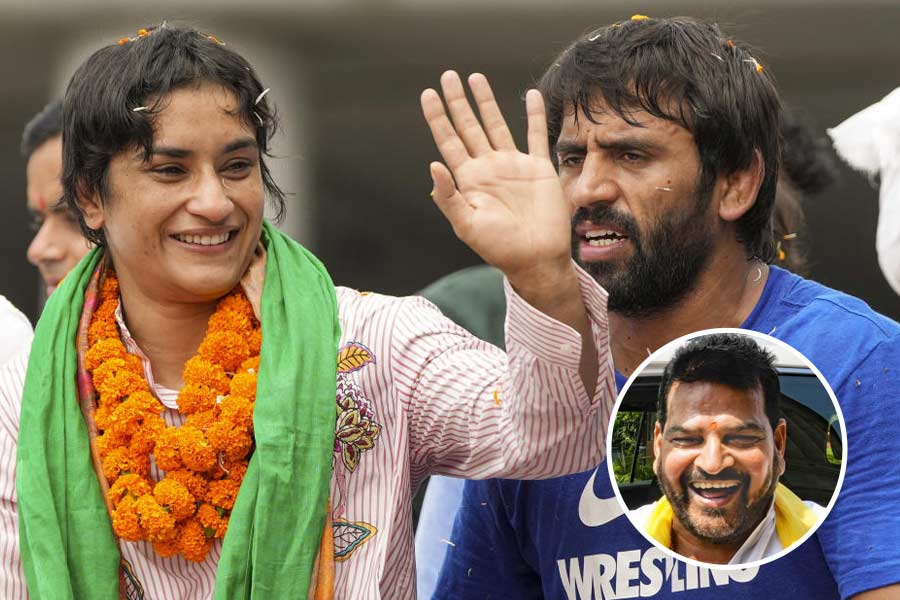The darkness that has engulfed Bangladesh ever since protests broke out over the government jobs quota system is coming to light as India’s eastern neighbour slowly restores communication systems.
The Telegraph Online spoke to a few Dhaka residents on Friday and what they said paints a very different picture from what the Sheikh Hasina-led Awami League government of Bangladesh claims.
The residents, who all spoke under cover of anonymity for obvious reasons, said gunshots continued to ring at night across the skyline of Dhaka.
“Helicopters went over Dhaka, firing at open windows. Gunshots were heard in Basundhara and Badda localities,” a Dhaka resident said.

PTI picture.
Bangladesh’s leading daily Prothom Alo on Friday reported that the death toll from the quota protest crackdown had risen to 204 with three more young men –identified as Zakir Hussain, 29, Zaman Miya, 17, and Sohail Rana, 20 – succumbing to their injuries at the Dhaka Medical College Hospital and Sheikh Mujib Medical University.
Many believe the actual death toll is much higher than what news agencies and publications have reported.
Out of the 65 students activists who had started the movement against the quotas for government jobs – which included 30 per cent for the families of those who fought for independence from Pakistan – one has been killed, and four arrested since the protests turned violent.
“Victims of bullet-wounds were being refused treatment at most of the hospitals,” claimed a student coordinator who has been on the run since violence broke out and the Hasina government declared curfew and deployed the army.
“A journalist friend of mine who went to the Suhrawardy Hospital found the floor was covered with blood. The number of people killed in Paltan, Mirpur, Tangail will never be known. Students, workers, men, women… the bullets spared none.
“Raids were carried out at the hostels and mess in the Jahangirnagar campus by the army on July 21. They picked up anyone who looked suspicious,” the student said.
A young artist and researcher, who has been living in Dhaka for the last 15 years, was on the way to his residence in a gated-community in tony Gulshan after a drink with some friends just before curfew was imposed. He came across a stand-off between police and the students.
That was his only brush with the protests and the police excesses, news of which have trickled past the iron curtain of the Sheikh Hasina government and its law-enforecment agencies.
“I did not see anything [happen]. I was mostly at home, cooking dinner and playing football. You can say we were lucky; very, very privileged,” the artist told The Telegraph Online from the UK where he reached late last night.
“That was not the case in several areas where people were being picked up from their homes late at night. Some of my friends were with a journalist, a single dad, when he was shot by the police. They fled for safe houses soon after.”
Since the partial restoration of internet, videos of the police and military firing on students and others in Bangladesh have found their way to social media. While there is no way to verify if the videos are real, they are horrifying.
International pressure on Hasina govt
The United Nations Human Rights chief Volker Turk on Thursday asked the Bangladesh government to disclose full details of last week’s crackdown and restore access to the internet.
“We understand that many people were subjected to violent attack by groups reportedly affiliated with the government, and no effort was made to protect them,” Turk was quoted as having said. “In order to begin to rebuild gravely damaged public trust and create an environment conducive to public dialogue on the underlying concerns that led to this wave of violence. I urge the government to ensure that all operations of law enforcement agencies are conducted strictly in line with international human rights norms and standards, particularly regarding the policing of protests, including use of force.”
Rupa Huq, the British MP representing Ealing Central and Acton, on Wednesday demanded that the British government release a statement on the situation in Bangladesh.
“Recent days have seen protests in Rome, Paris, my right honourable friend’s city Manchester and Trafalgar Square over what’s been going on in Bangladesh. A three-figure number of student protesters killed. We don’t know how many as they have turned the internet off,” she said in the British parliament, insisting the government should immediately issue a statement to clear its position as it had a “historic, unique role” to play.
Bangladesh govt blames Opposition
While there has been global outrage over the firings and the killings, the Hasina government has blamed the Opposition, the BNP-Jamaat, for the violence. The Bangladesh prime minister on Thursday broke down while describing damage to public property.
Sympathisers of the Hasina government have set up local Awami League units in their adopted countries across Europe and will hold a protest outside the House of Commons on July 29 against what they describe as the Opposition BNP-Jamaat’s attempts to destabilise the country.
“Those who live abroad and make provocative statements to mislead the people living in the country and outside, when the time comes for the renewal of their passports, these activities of theirs will be taken into account. A list is being prepared,” warned Showket Osman, general secretary of the Portuguese Awami League, in a Facebook post.
The artist that The Telegraph Online spoke with said there was no clear political leadership in sight and that the protests were a nationwide movement.
“There is no leader. The government is deliberately trying to pigeonhole. There was confusion on the ground about who the students were speaking for,” he said. “In my 15 years in Dhaka I have never seen anything like this. Chittagong, Cox’s Bazar, Rajshahi, Mymensingh, Sylhet, no place was free from the unrest. Even private universities, which steer clear of such movements, were at the forefront.”
Like many in Dhaka and elsewhere he too is wondering what will unfold next.
“None of my educated, secular friends want the Jamaat-BNP alliance to take over. I also don’t want them,” he said. “People are confused because there is a vacuum in alternate leadership.”











